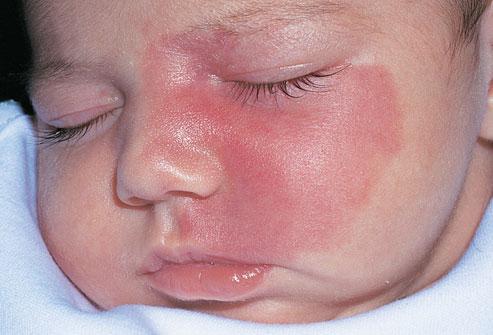
The erythemas Complex reactions occurring in the capillaries and arterioles of the skin cause erythema, which is simply redness of the skin. This may present as flat macules or as papules, which are raised above the surrounding skin. The lesions may be transient or last for weeks, constant or variable in distribution, with or without vesicles. It is possible to recognise specific patterns within this plethora of clinical signs, but even the most experienced dermatologist may be reduced to making a general diagnosis of “toxic” erythema.
The best we can do therefore is to recognise the common types of erythema and list the possible causes. It is then a matter of deciding on the most likely underlying condition or group of conditions—for example, bacterial infection or autoimmune systemic disease. Morphology and distribution Because there can be the same cause for a variety of erythematous rashes detailed descriptions are of limited use. None the less, there are some characteristic patterns. Morbilliform The presentation of measles is well known, with the appearance of Koplik’s spots on the mucosa, photophobia with conjunctivitis, and red macules behind the ears, spreading to the face, trunk, and limbs.
The prodromal symptoms and conjunctivitis are absent in drug eruptions. Other viral conditions, including those caused by echoviruses, rubella, infectious mononucleosis, and erythema infectiosum, may have to be considered. Scarlatiniform These rashes are similar to that in scarlet fever, when an acute erythematous eruption occurs in relation to a streptococcal infection. Characteristically erythema is widespread on the trunk.
\There is intense erythema and engorgement of the pharyngeal lymphoid tissue with an exudate and a “strawberry” tongue. Bacterial infections can produce a similar rash, as can drug rashes, without the systemic symptoms.




